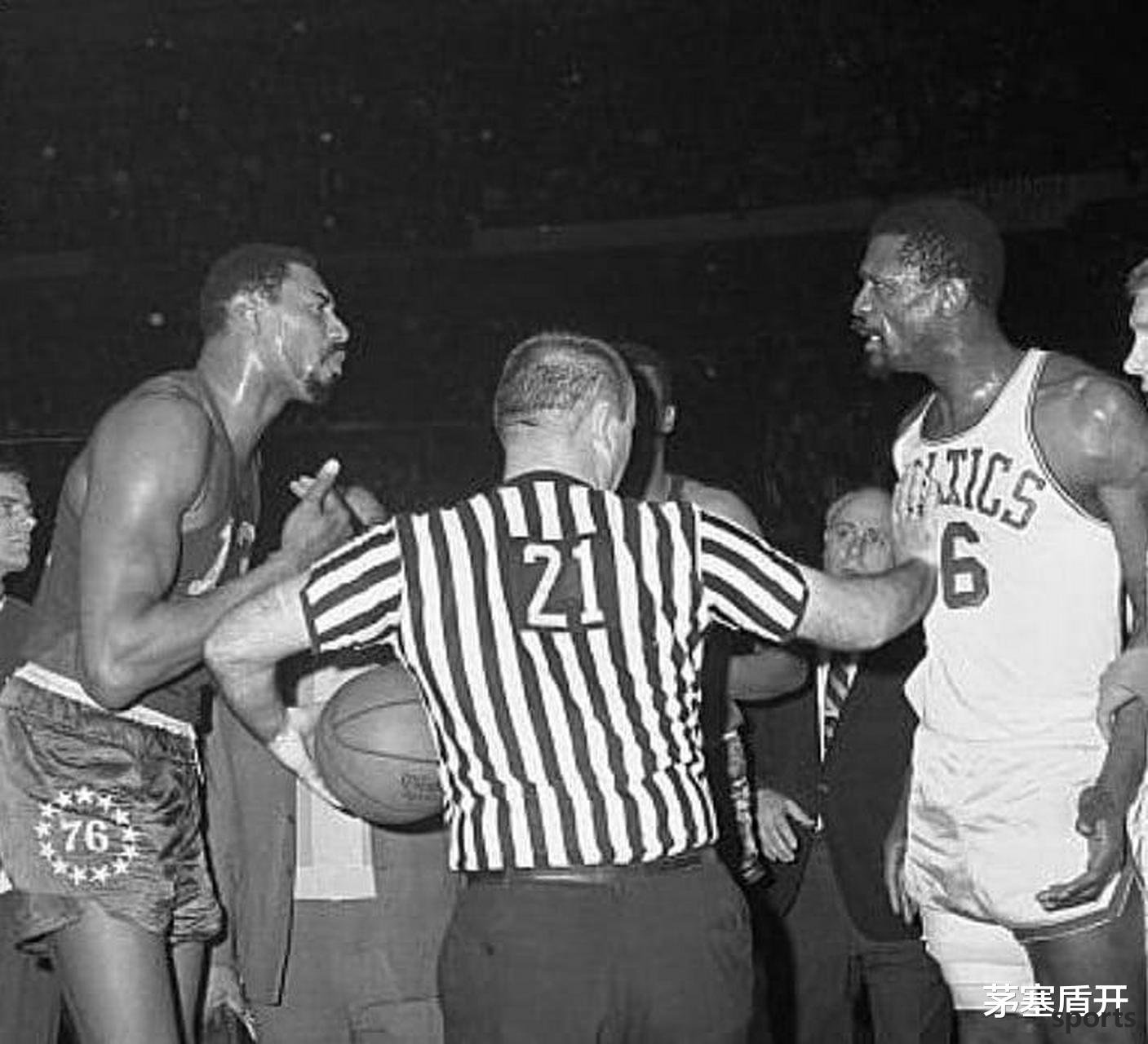Chamberlain s physical fitness is so amazing, why did Russell win more championships
This is a classic proposition that runs through NBA history: Why is Chamberlain (11 rebounding champion, 7 scoring champion, 100 points per game) whose physical fitness is far inferior to Russell (11 championships) who is smaller? The core answer is: basketball is a team sport, and Russell has brought the team value to the extreme, perfectly adapting to the needs of the championship system. The following is an in-depth analysis: 1. Fundamental contradiction: Personal data vs Team victory Key points: Chamberlain is obsessed with using exaggerated data to respond to doubts (such as being criticized for being "selfish" and deliberately trying to win the game), while Russell is willing to do any blue-collar work (position, pick-and-roll, assisting defense). 2. Champion password: Russell's five stealth weapons The core of the strongest defensive system in history: "Human Shield Machine" type defense: use the speed of the sky-drift (can be replaced with defense guards) and bullet speed to build a defensive network covering the entire game. Data proved: Russell averaged 22.5 rebounds and 4.3 assists per game in his career, but his actual defensive influence far exceeds the data - he directed the rotation of the team, forcing his opponent's shooting percentage to plummet by more than 10% (there was no block count at the time, otherwise he would average 8+ blocks per game). The "winning gene" of the spiritual leader: The finals scored 10 wins and 0 losses (first in NBA history), and the key battle will always break out. The famous lecture in the Celtic locker room: "I don't care who scores, but whoever doesn't defend will go down!" Team-first "anti-superstar" basketball: Super Era Basketball IQ: Gradually used the "blocking ball control" technology (not fan-out of bounds) to directly launch a fast attack. targeted Chamberlain in the playoffs: he made a target to defend himself, inducing him to fall into the trap of singles at a low post (G7 in the 1969 Finals, Chamberlain made only 4 of 18 shots). Bonus teammate? No, it is a system symbiosis! Celtic lineup seems luxurious (Cousy, Shaman, Haflicecke), but in essence, Russell's defensive system releases teammates: Cousy's defensive loopholes were covered by Russell's assisted defense; shooters group gained a large number of open spaces due to fast break counterattacks. 3. Chamberlain's "Champion Dilemma": System mismatch and Curse of the Times "isolated" play style consumes the team: 76ers averaged 35 shots per game, and his teammates became spectators (in 1962, no one except him averaged >15 points). Counterexample: In 1967, he transformed into a center (average of 8.6 assists per game), leading 76ers to end the Celtics' eight consecutive championships, proving that he can win, but he needs to suppress his scoring instinct. The rules and restrictions for the wrong birth: No three-point line: the opponent can double-team the inside and short the outside line (Chamberlain's later career development hook-in is still difficult to break the deadlock). Expand the army and dilute competition? wrong! In the 1960s, there were only 9 teams in the NBA, but there were 8 teams with 50 wins (compared with Hyundai 30 teams with only 4-5 teams). Subtle gap on the psychological level: Chamberlain occasionally became impatient in the key battle (the mistake of tiebreak in the Eastern Conference Finals in 1968 lost the game); Russell became more calm as he went to the life-and-death battle (the G7 scored 6 points in overtime in the 1962 Finals to secure the victory). 4. Data comparison: Revealing the essence of the championship Interpretation: Russell's victory contribution value (WS) is second in his career (second only to Jordan), proving that his "data is not conspicuous, but his winning value is the god." 5. Ultimate conclusion: Two great different dimensions Russell model: "Champion cornerstone" - build a winning system with defense, leadership, and sacrifice spirit, and define the upper limit of team basketball. Legacy: Modern center template (Jokic support/Gobert defense both have its own shadow). Chamberlain mode: "Talent Totem" - break through the boundaries of competitive athletics with inhuman physical fitness and redefine human athletic potential. Legacy: If there is no other, there will be no later generations’ imagination of the “super center” (O’Neal and Embide both regard it as their belief). Summary of golden sentences in basketball history: "Chamberlain makes fans scream, Russell makes the championship flag rise." - Bill Simmons (NBA historian writer) 


- Recent Posts
-
- Rockets fans are worried! Dura
- Epic Big Three? It is revealed
- The NBA has decided next seaso
- O Connor: The Timberwolves are
- The Clippers lineup is diffic
- Pelinka: Zhan Dongli s non-sel
- Missed the finale? It was reve
- The Rockets officially announc
- Average 41 points per game, be
- Chinese men s basketball team
- Hot Posts
-
- After signing with the Trail B
- "NBA Finals G6" Thunder VS Pac
- Bill wants to complete a buyou
- Thunder substitute Caruso: Gre
- 2-1 in one game! WTA Berlin St
- First-time pick, 25th first-ro
- After the NBA Clippers trade,
- The latest news of the Warrior
- Rockets officially announced 5
- The Suns are finally going to
- Outrageous! The truth about th
- If 13 million is received, run
- US media questioned Yang Hanse
- Is Paul expected to join the L
- Paul George undergoes surgery
- On May 2, Pelinka s latest int
- 8 first rounds + 60 million sp
- Anthony: I ve been through man
- Cavaliers President: Mobley s
- The Warriors "beat" Gobert by
- search
-
- Links
-
